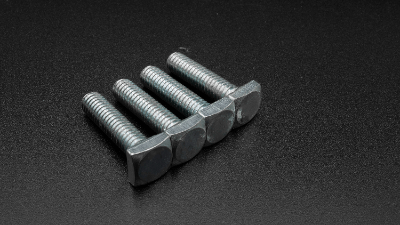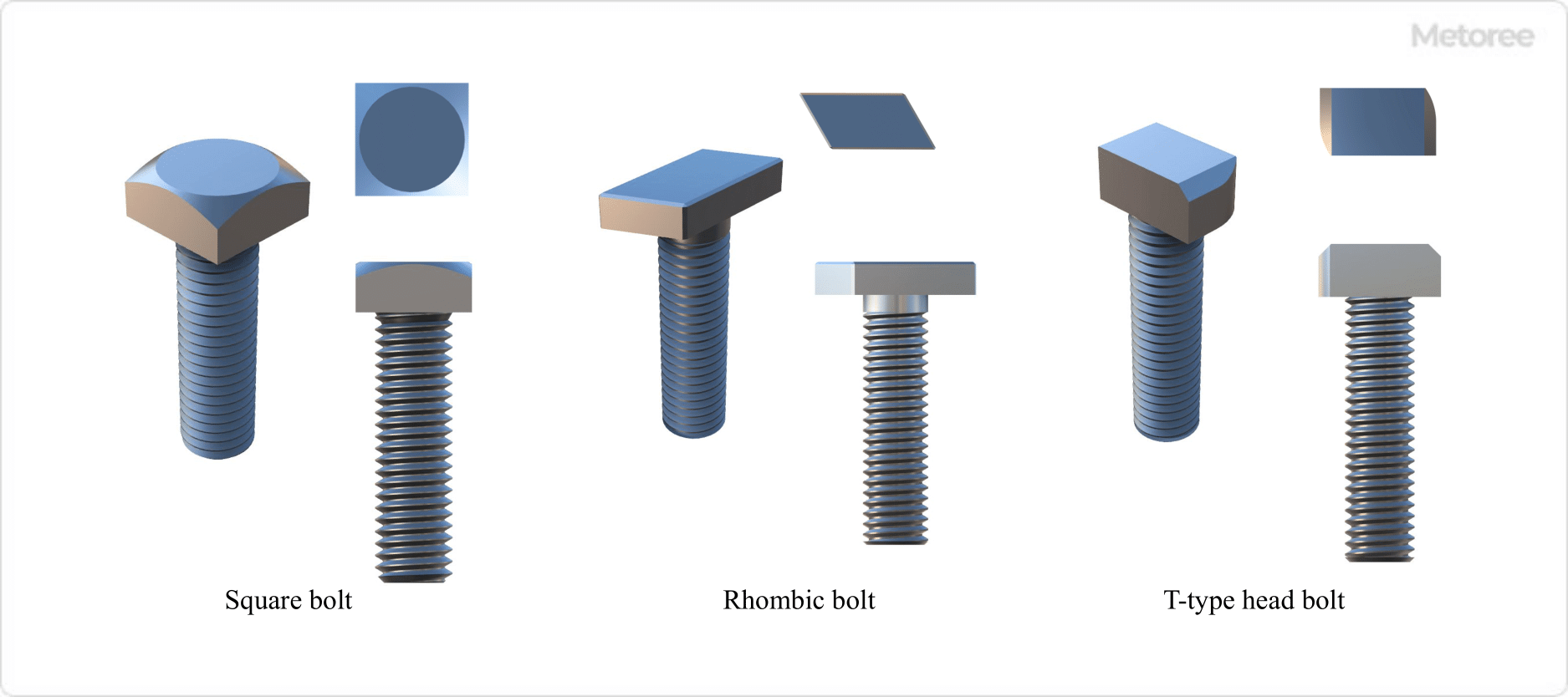What Is a Square Head Bolt?

Square head bolts and square head screws, are bolts with a square head (square or rectangular).
A square head bolt has a square head, whereas a hexagonal bolt has a hexagonal head.
“Diamond head bolts” and “T-Head Bolts” with a rectangular shape are also available as Square Head Bolts, but they are not classified as square head bolts.

Figure 1. Shapes of square, Rhombic, and T-type head bolt
The following are the standards for square head bolts:
- ASME B 18.2.1 square head bolts
Uses of Square Head Bolts
Square head bolts are mainly used for construction reinforcement hardware. The square shape of the bolt head prevents the corners of the bolt head from wearing down and rounding off, even when tightened with a high torque, and thus allows for firm tightening with little possibility of damage.
Construction reinforcement hardware is hardware that is attached to the corners of timbers, such as beams and columns, to prevent warping and distortion and to reinforce the building structure. Square Head Bolts are used to fasten the hardware to the wood.
Compared to hexagonal bolts, square bolts have a larger contact area between the tool and the screw, so there is less slippage between the socket or wrench and the bolt head. Since the corners of the bolt head are less prone to wear, rounding, and damage, square bolts are used for screws that require high torque. It is used for screws that are strongly fixed or not to be removed, and can be turned without slipping the tool.
Principle of Square Head Bolts

Figure 2. Shape of square bolt
Square head bolts are the same as the hexagonal bolt and are fastened to the object to be fastened by means of a screw (in this case, “screw” refers only to the screw shape). Like hex head bolts, square head bolts are tightened by inserting a tool such as a wrench or socket into the head of the bolt.
Square head bolts are threaded with metric coarse threads or inch threads. The length of square head bolts is indicated by the length of the shaft, including the threaded part, excluding the height of the bolt head, in the same way as the length of ordinary bolts such as hexagonal bolts.
Types of Square Head Bolts
There are two types of square head bolts. The bolts with a width other than the standard size are called “large square bolts.”
In addition, three types of surface roughness are specified as the degree of bolt finish.
- Top: Rz25 for the surface roughness of the seat (the surface of the lower part of the bolt head in contact with the part to be fastened), the cylindrical part and the top surface of the head, and Rz50 for the side surface of the head.
- Middle: Rz25 for the surface roughness of the seat, Rz50 for the cylindrical part, and no special requirements for the top and side surfaces of the head.
- Normal: No particular surface roughness is specified.
Other Information on Square Head Bolts
1. Main Materials and Surface Finish of Square Head Bolts
Square head bolts are made of materials with relatively low strength classifications are used for steel bolts. It is necessary to select the appropriate strength classification for the location and application.
However, commercially available square head Bolts are also available in stainless steel, such as SUS304, for use in locations where corrosion resistance is required.
Strength classifications and materials of bolts are as follows:
- Strength class 6: Ordinary steel, carbon steel, SS400, S20C, etc.
- Strength class 8: Ordinary steel, carbon steel, SS400, SWRCH, etc.
However, many commercially available square head bolts are uni-chrome plated to prevent rusting during storage.
2. Tightening Tools

Figure 3. Square bolt tightening tool
Common types of tightening tools include single-sided wrenches, T wrenches, and sockets (square holes). Sockets can be square (4-point) or octagonal (8-point), and octagonal sockets are called double 4-point sockets.